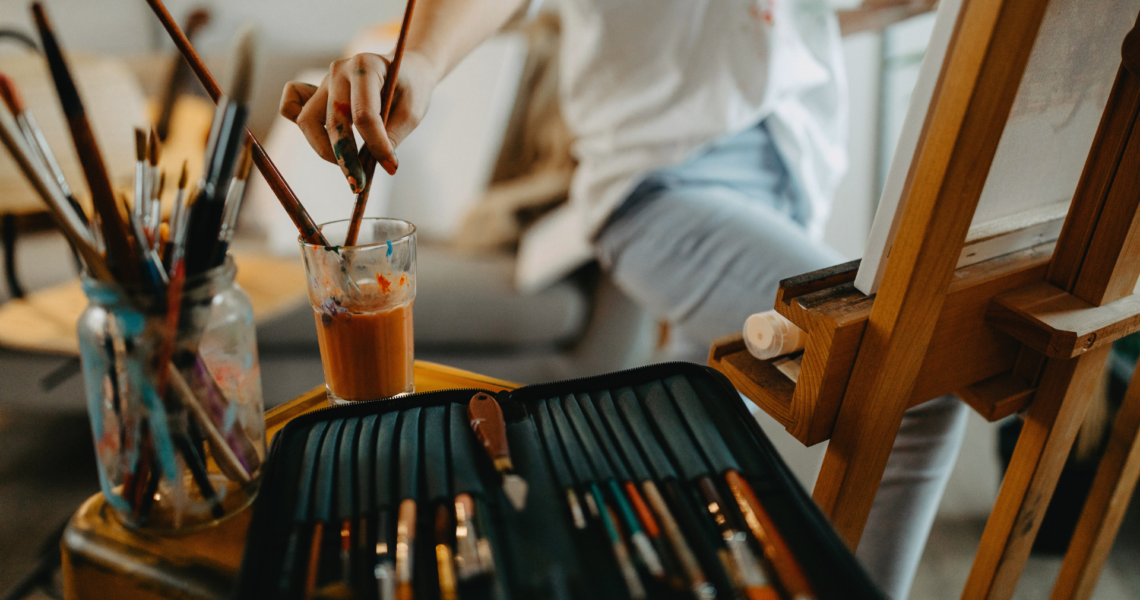Finding inspiration for artwork can sometimes feel daunting. Exploring diverse sources such as nature, literature, or even personal experiences can ignite creativity and lead to new artistic ideas. Artists often benefit from stepping outside their usual environment, as fresh stimuli can trigger innovative thoughts.
Engaging with other artists through community events, workshops, or online platforms provides an opportunity to exchange ideas. Listening to varied perspectives can reveal new techniques and concepts that might resonate with their own work. Additionally, maintaining a sketchbook for spontaneous thoughts can capture fleeting moments of inspiration.
Taking the time to observe the world openly enriches the artistic process. Whether it’s a stroll through a gallery or a quiet moment in nature, being mindful can uncover unexpected gems that fuel creativity. These practices create a foundation for continual artistic growth and exploration.
Understanding Inspiration
Inspiration is a complex phenomenon that significantly influences artists. It can stem from various sources, each affecting creativity uniquely and deeply. This section explores the psychology of inspiration and the different types that can ignite an artist’s creativity.
The Psychology Behind Inspiration
Inspiration is closely linked to psychological states and processes. It often occurs during moments of openness and relaxation when the mind is free to wander. Research shows that mood can impact creativity, with positive emotions generally enhancing inspiration.
Cognitive theories suggest that inspiration involves a transcendent experience where individuals connect with something larger than themselves. This connection can trigger creative thoughts and lead to the generation of ideas. Engaging with different art forms, nature, or social interactions aids in this psychological process, encouraging fresh perspectives and novel concepts.
Types of Inspiration for Artists
Artists can draw inspiration from numerous sources, categorized into several distinct types.
- Nature: Many artists find motivation in the natural world, drawing on its beauty and complexity.
- Life Experiences: Personal experiences and emotions can fuel artistic expression, making the artwork more relatable and authentic.
- Other Art Forms: Music, literature, and film can spark ideas, pushing artists to explore new styles or themes.
Furthermore, social and cultural influences play a vital role in shaping an artist’s vision. By observing the world around them, they can translate those insights into compelling art that resonates with others.
Seeking Inspiration
Finding inspiration for artwork can stem from various sources that ignite the creative process. Different avenues, such as nature, historical contexts, and the work of other artists, offer unique perspectives that can enhance creativity and generate new ideas.
Nature and Environment
Nature is a powerful source of inspiration for artists. The colors, textures, and forms found in landscapes, plants, and animals can serve as a foundation for artistic expression. Many artists venture outdoors to observe the subtle play of light, the variations in season, and the intricacies of natural patterns.
For example, the vibrant hues of a sunset or the complex designs of leaves can evoke emotional responses and drive creativity. Capturing these elements in artwork can lead to pieces that resonate with viewers. Observing local ecosystems can prompt an exploration of themes such as biodiversity and environmental conservation, enriching the narrative behind the art.
Historical and Cultural Influences
Art is often a reflection of historical and cultural contexts. Artists can find inspiration by studying different methodologies, styles, and movements throughout time. Examining significant historical events and cultural phenomena can lead to compelling narratives that inform their work.
Attending museums or art galleries allows artists to engage with different art forms and historical periods. This can spark innovative ideas or prompt a re-examination of personal experiences. Integrating cultural symbols and techniques can provide depth, allowing artists to honor traditions while creating original works that converse with the past.
Work of Other Artists
The work of other artists is a vital source of inspiration. More than just replicating styles, observing fellow creators can stimulate new thoughts and techniques. Artists can learn about different mediums and approaches by analyzing how others tackle form, color, and subject matter.
Art communities, workshops, and exhibitions are excellent platforms for artists to gather insights from peers. Engaging with diverse artistic voices encourages experimentation and pushes creative boundaries. Sharing ideas can also lead to collaborations, further expanding the pool of inspiration available to artists.
Creative Practices
Establishing creative practices can significantly enhance artistic inspiration. By incorporating structured daily routines and embracing experimentation, artists can unlock new ideas and techniques.
Daily Routines and Habits
Developing a consistent daily routine is essential for fostering creativity. This may include setting aside specific times for artistic activities, whether it’s drawing, painting, or writing.
Key habits to consider:
- Morning Pages: Writing three pages of free-flowing thoughts can clear the mind.
- Scheduled Breaks: Taking short breaks boosts productivity and refreshes ideas.
- Dedicated Art Time: Block out uninterrupted time for art creation.
These habits provide a foundation for creative flow and help the artist remain focused. Regular routines create an environment conducive to inspiration.
Experimentation and Play
Incorporating play and experimentation into artistic practice is crucial for idea generation. Artists should feel encouraged to try new techniques, materials, and styles without the fear of judgment.
Suggested methods include:
- Mixed Media: Combining different materials can lead to unexpected results.
- Random Prompts: Using prompts or challenges can spark creativity.
- Art Journals: Keeping an art journal for sketches and ideas aids in exploring concepts.
This approach not only nurtures creativity but also reignites passion for art. Embracing experimentation often leads to discovering one’s unique style.

